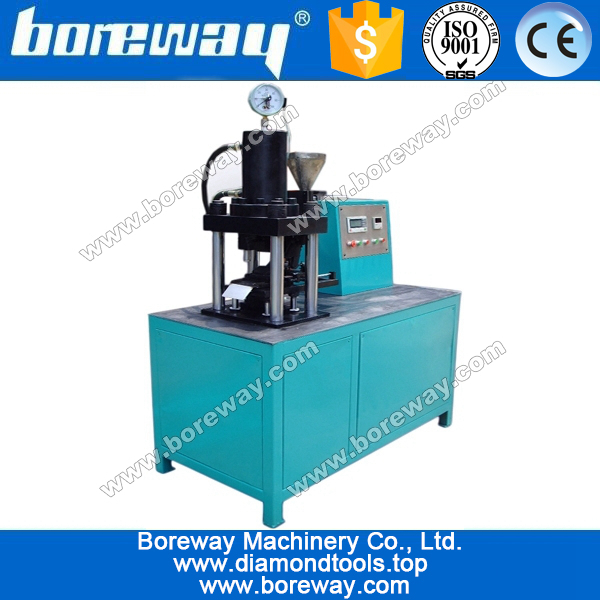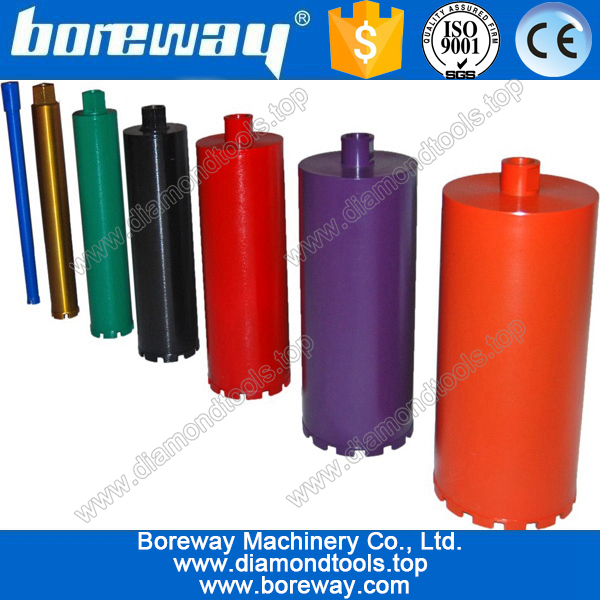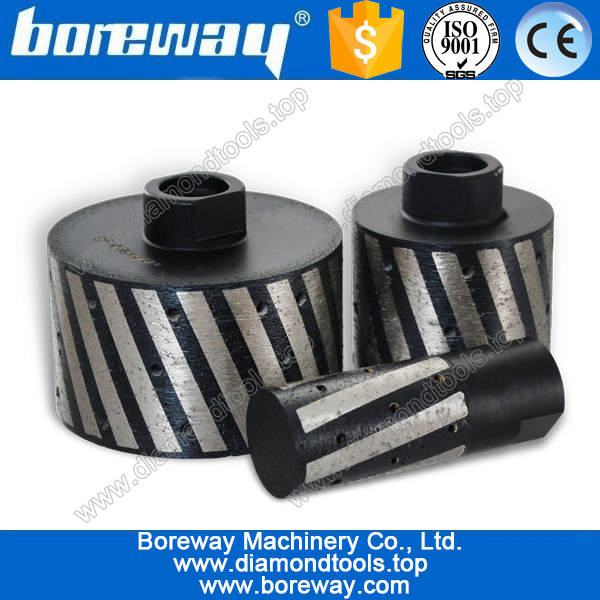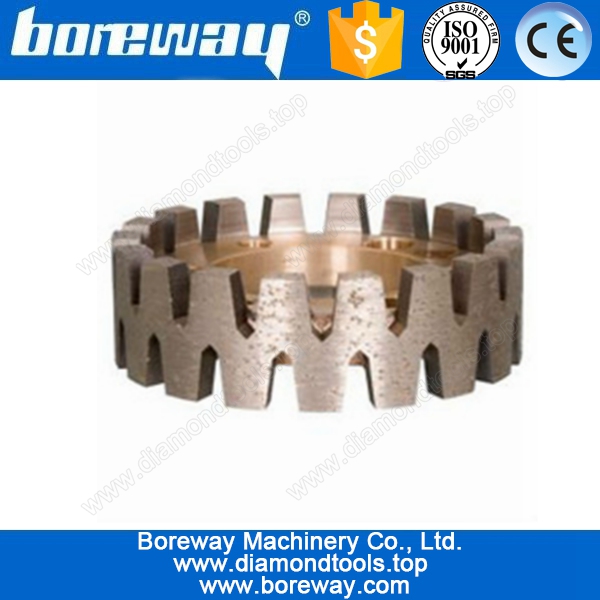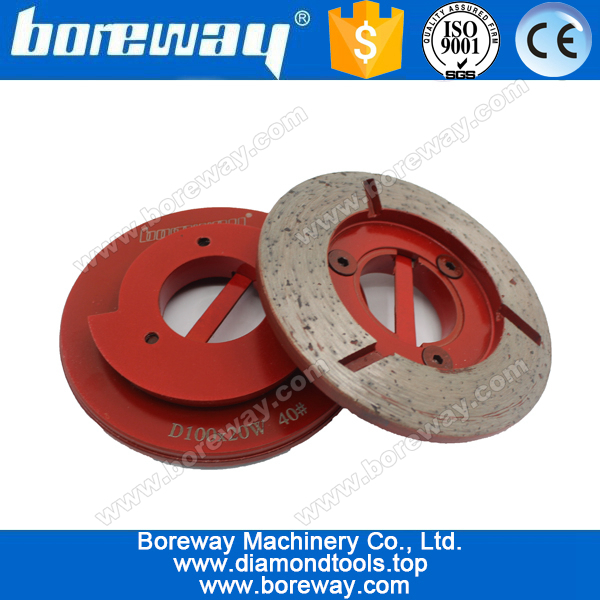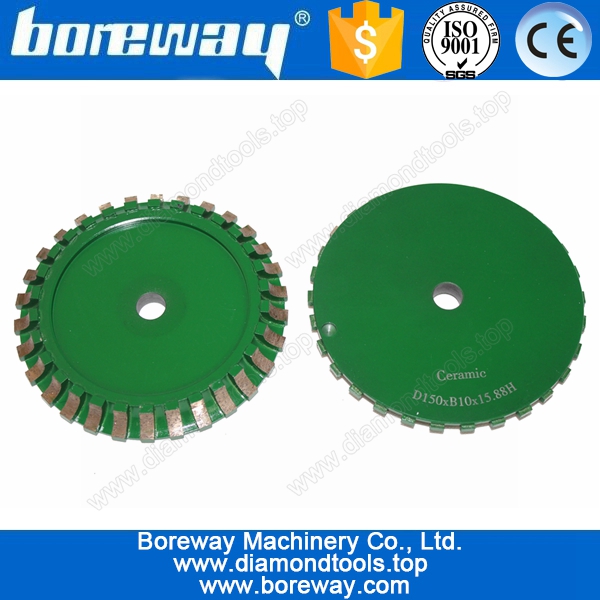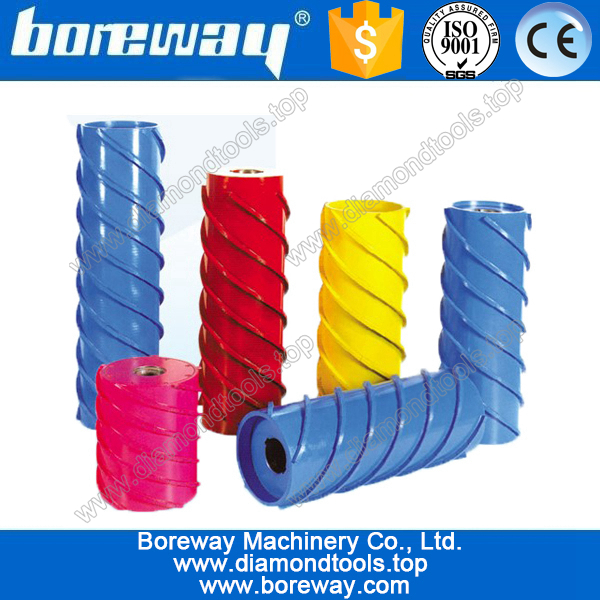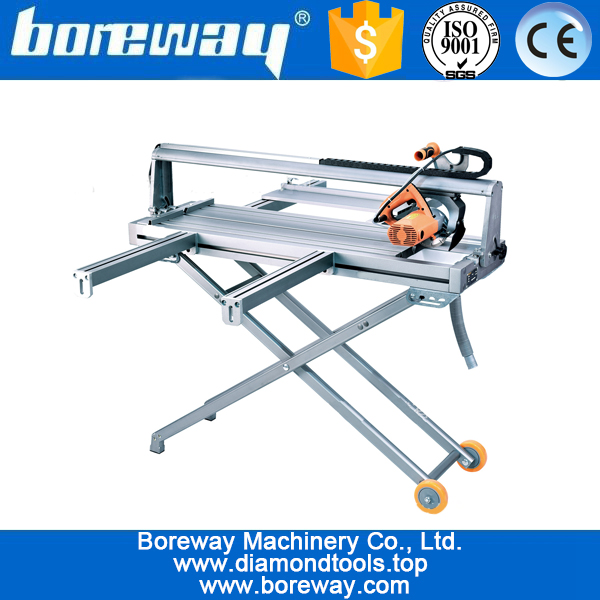When using and choosing a grinding block, what knowledge should be known first?
When using and choosing a grinding block, you must first understand these little knowledge.
1. The hardness of the ground
The concrete used in the design and construction of the concrete floor is represented by a number, which is what we usually say C20, C25, C30, etc. Under normal circumstances, the higher the number, the better the strength and hardness of the concrete. Three Hexagon Segment Trapezoid Grinding Pads ,However, due to various factors, the marking of concrete And the hardness of the ground is often not corresponding.

The hardness of the concrete floor is usually expressed by Mohs' hardness. The hardness of the concrete floor is usually between 3-5. On the construction site, we can use some substitutes instead of the Mohs hardness tester to understand the hardness of the floor: the hardness of the dents and the scratches that can be drawn with iron nails and keys is less than 5, otherwise The hardness is greater than 5.
2. The flatness of the ground
Manual troweling of the leveled ground or the old ground that is loose and severely damaged. It is necessary to level or remove the loose surface layer. It is necessary to use a high-power grinder, and choose a concrete diamond abrasive block with strong grinding force and suitable for leveling. Block Professional Metal Trapezoid Shape Grinding Pad .

The self-leveling cement floor or the mechanical leveling of the trowel is better. Only diamond resin grinding discs can make a beautiful polished floor, and the grinding discs are also more economical.

3. Types and sizes of grinding blocks and blocks
The most commonly used abrasive for floor treatment is PCD abrasive block (1/4 PCD Segment Pad for Epoxy Removal Floor ), metal-based grinding discs and resin-based grinding discs, PCD grinding discs are used to remove thick coatings on the floor surface, metal-based grinding discs are used for floor surface pretreatment and rough grinding treatment, resin-based grinding discs Used for surface rough grinding, fine grinding, fine grinding and polishing treatment.

Particle size refers to the size of diamond particles contained in the abrasive tool, the lower the number, the larger the particle size.
PCD grinding discs are not divided into particle size numbers, but they are directional. Special attention should be paid to this point when using; metal grinding discs are usually divided into several numbers such as 30#, 50#, 100#, 200#, etc. Which particle size to use should be determined according to the ground conditions, for example, the ground is not flat or the surface is loose, you may need to use 30# metal grinding discs to remove the loose surface to level the ground, and the ground that needs to be frosted or grindstone effect is usually required 50# or 100# metal grinding discs are used;
Resin grinding discs are widely used, particle size number 30#-3000#, different particle size numbers are distinguished by different colors of sticky cloth, used for ground rough grinding, fine grinding, fine grinding and polishing Treatment, resin grinding discs have the difference between hard grinding discs and soft grinding discs. Hard grinding discs have better leveling effect and are more suitable for medium and large floor grinders. Soft grinding discs have better polishing effect and are suitable for various types of ground. Ping grinding machine.

4. The weight and speed of the grinder
Floor grinding machines are usually divided into small, medium and large types. Generally speaking, the larger the machine, the greater the power, and the higher the efficiency; in actual use, it is not that the larger the machine, the better. Although the grinding efficiency of oversized and overweight grinders is very high, it will often lead to excessive grinding and increase in use. Cost of construction. Experienced workers will adjust the machine speed, moving speed, number of grinding discs and machine counterweight according to the characteristics of the machine to reduce construction costs and improve construction efficiency.








